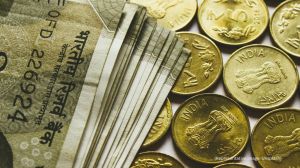Prime Minister Narendra Modi said Friday that the government will take a decision soon on revising the minimum age of marriage for women once it receives a report from the committee constituted for this purpose. Addressing a video conference after releasing a commemorative coin of Rs 75 denomination on the 75th anniversary of the Food and Agriculture Organisation (FAO), the Prime Minister also reiterated that government procurement on the minimum support price will continue.
On the age of marriage, Modi said: “Necessary discussion is going on to decide what should be the ideal age of marriage for daughters. I also get letters from such conscious daughters across the country who ask to decide it quickly, and ask why the committee’s report has not come yet. I assure all those daughters that the government will take action on the report very soon.”

On June 2 this year, the Union Ministry for Women and Child Development set up a task force to examine the possibility of increasing the age of marriage for women from 18 to 21 as a measure to lower Maternal Mortality Ratio (MMR) and improve nutritional levels, apart from other initiatives. Section 5(iii) of the Hindu Marriage Act, 1955 sets 18 years as the minimum age for the bride and 21 for the groom. Child marriages can be declared void at the request of the minor.
In Islam, the marriage of a minor who has attained puberty is considered valid. The Special Marriage Act, 1954 and the Prohibition of Child Marriage Act, 2006 also prescribe 18 and 21 years as the minimum age of consent for marriage for women and men, respectively.
In his speech, the Prime Minister also listed government initiatives like Jal Jeevan Mission, Mission Indradhanush, Swachh Bharat Mission and National Nutrition Mission (POSHAN Abhiyaan) for the “nutrition and care” and health of children and women.
“We have adopted an integrated and holistic approach. We started working on a multi-dimensional strategy by abolishing the silos,” he said. “Today, sanitation pads are being provided to the poor sisters and daughters of the country for Re 1. One effect of all these efforts is that for the first time in the country, the gross enrolment ratio of daughters for education has been much higher than sons,” Modi said.
According to UNESCO, the Gross Enrolment Ratio of (GER) girls in secondary education in India registered an increase between 2010 and 2014 — from 61.1% to 75.04%. It’s also during this period that the enrolment gap between girls and boys narrowed significantly and eventually led to girls overtaking boys in secondary education.
Story continues below this ad
The enrolment numbers for girls, however, have plateaued ever since, hovering between 74% and 75%. For 2019, the enrolment ratio for girls in secondary education stood at 74.52% and for boys at 73.14%. UNESCO defines GER as the “number of students enrolled in a given level of education, regardless of age” and it is “expressed as a percentage of the official school-age population corresponding to the same level of education”. Secondary education covers Classes 9 and 10 and it is usually at this age that many girls get married.
Allaying concerns of farmers about the new farm laws, the Prime Minister reiterated that the government would continue to procure on the minimum support price. “MSP and government procurement are an important part of the country’s food security. Therefore, it is very important that it should be well-managed scientifically and with good management, it should continue, and we are committed to this,” he said.
“With the new options, the market itself will reach the door of small farmers who used to sell their produce to middlemen earlier due to lack of access to mandis,” he said.
“This will not only provide higher prices to the farmer, but will also provide relief to the farmers due to the removal of middlemen, and the common buyers will also be benefited,” he said.
Story continues below this ad
The Prime Minister also dedicated to the nation 17 recently developed biofortified varieties of crops.
He said common varieties of some crops lacked some micronutrients and, therefore, biofortified varieties were developed to overcome these shortcomings.
He said 17 biofortified seed varieties of several local and traditional crops, including wheat and paddy, are being made available to the farmers which is an important step to strengthen the nutrition campaign.









